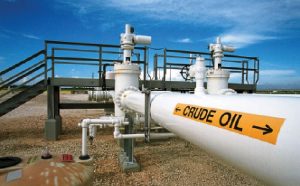 There are two conditions precedent to any reduction in the quantum of imported crude; (i) there is a corresponding increase in its domestic production or (ii) there is a substantial fall in its consumption in the country. Unfortunately neither has happened. On the contrary, India’s crude oil production that was 37.46 MMT in 2014-15 fell to 36.95 MMT in the following year. Thereafter the production continued to fall each year. In the current year 2019-20, crude production fell by six per cent to 32.17 MMT — the lowest level of production in the preceding 18 years. Of this decline, the share from the fields being operated by private players was as high as 15.5 per cent while production at Oil India declined by six per cent. Happily, ONGC’s output of crude fell only by two per cent.
There are two conditions precedent to any reduction in the quantum of imported crude; (i) there is a corresponding increase in its domestic production or (ii) there is a substantial fall in its consumption in the country. Unfortunately neither has happened. On the contrary, India’s crude oil production that was 37.46 MMT in 2014-15 fell to 36.95 MMT in the following year. Thereafter the production continued to fall each year. In the current year 2019-20, crude production fell by six per cent to 32.17 MMT — the lowest level of production in the preceding 18 years. Of this decline, the share from the fields being operated by private players was as high as 15.5 per cent while production at Oil India declined by six per cent. Happily, ONGC’s output of crude fell only by two per cent.
There were multiple factors that led to the declining production. One was the disturbed conditions and agitation in the North East region on some local issues that adversely impacted oil production of both ONGC and Oil India from their Assam fields. Production at Cairn Oil & Gas fields too was affected owing to some ‘logistics’ and ‘demand’ issues. Even the prospects in the current fiscal too do not look bright because of the obvious reluctance of the oil producers to raise their respective production levels owing to the low global crude price scenario.
Yet, despite the continuously declining production of crude, the government still remains optimistic about its avowed goal of cutting down on import of crude. Modi had reiterated just about six months ago that the government had taken some “decisive steps” towards reducing its import by 10 per cent. Oil minister Dharmendra Pradhan too had also repeated ad nauseam that the government was developing “a new strategy and initiatives to achieve the target of reducing dependence by 10 per cent on the imported crude”.
What were then the ‘new strategy and initiatives’ taken by the ministry of Petroleum in order to achieve the desired objective? One, a new Hydrocarbon Exploration Licencing Policy was
introduced. Two, “discovered small fields” were given on contract with a view to monetizing their reserves. And three, a “national data repository” was set up by Directorate General of Hydrocarbons on 28 June 2017. There were some other initiatives like undertaking 2D seismic survey of the hitherto ‘unappraised areas’. Since the taste of pudding lies in eating, it needs to be ascertained how far all these initiatives have helped in the main task of reducing import of crude by 10 per cent by the year 2022?
Production expansion
There are currently two major government owned E&P companies viz ONGC and Oil India Ltd operating in the country besides some private and joint venture entities. Of the total production of 34.2 MMT in the year 2018-19, ONGC’s share alone stood at 21.04 MMT, Oil
India contributed 3.29 MMT and the remaining 9.87 MMT came from the kitty of private and joint venture entities. It is thus imperative that production from ONGC fields both offshore and onshore be raised by 20 or more per cent. However, it is easier said than done. Its yearly production both from its offshore and onshore fields has virtually remained constant at 22.25 MMT since 2013-14. Even though most of the onshore fields of ONGC are more than 50 years old with declining yields, it goes to its credit that it has managed not only to maintain but also bring about an incremental increase in their output thanks to the deployment of latest IOR and EOR techniques.
However, it needs to be pointed out that India has always been a net importer of crude. In 1947, the domestic demand for petroleum products was just about 2.2 million metric tonnes (MMT) while the production was barely 0.25 MMT, all from Assam. The domestic production of crude oil in 1960-61 was only 0.45 million metric tonnes. By 1980-81, its production had risen to 10.51 MMT.
 Thirty seven years later in 2018-19, the domestic production was barely 34.20 MMT while imports were to the tune of 229 MMT — a deficit of nearly 86 per cent. In plain terms, the domestic crude production was merely 14 per cent of India’s total consumption.
Thirty seven years later in 2018-19, the domestic production was barely 34.20 MMT while imports were to the tune of 229 MMT — a deficit of nearly 86 per cent. In plain terms, the domestic crude production was merely 14 per cent of India’s total consumption.
Will the laudable object of reducing even by 10 per cent the import of crude become a reality or will it just remain a pipe dream? India neither has a magic wand nor rich oil reservoirs, leave alone elephantine fields. Our yearly consumption too will continue to increase irrespective of whatever measures we might adopt. Let us not live in a fool’s paradise and delude ourselves.
The bitter truth is that our dependence on imported crude will increase year by year. India is in a distinguished company of major oil importers such as the USA, China, Germany, Japan, Italy, the United Kingdom, South Korea, Brazil, Indonesia, Malaysia, Israel et al. There is no reason to feel ashamed about it.
Raj Kanwar is a Dehra Dun-based journalist and author. Views expressed are his own
letters@tehelka.com












